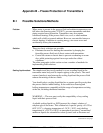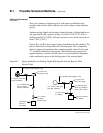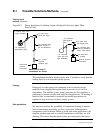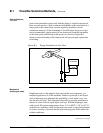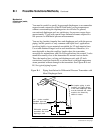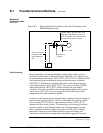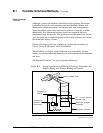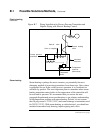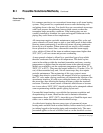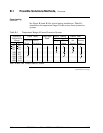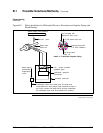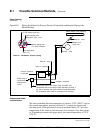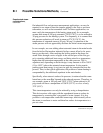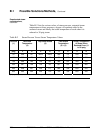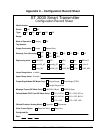
6/08 ST 3000 Release 300 and SFC Model STS103 User’s Manual 245
B.1 Possible Solutions/Methods, Continued
Steam heating,
continued
It is common practice to use conventional steam traps on all steam heating
systems. They permit live, superheated steam to enter the heating coils
and piping down to the trap. You should also use conventional steam traps
with lower pressure desuperheated steam which cannot overheat the
transmitter under warm-day conditions. If the heating pipes are not
carefully installed to eliminate low spots and trapped condensate in the
piping, they could freeze at low temperatures.
All steam traps require a periodic maintenance program. Dirt, scale, and
water softeners will cause traps to stick or jam which result in their either
blowing steam continuously or not blowing steam, allowing condensate
freeze-up in cold weather. When steam traps are used for cold-weather
freeze protection of water lines, a thermostat controlled steam supply
valve, which will shut off the steam at ambient temperatures higher than
50°F (10°C), will save steam and prevent overheating.
A more general solution is offered by a specialized type of trap which
throttles condensate flow based on its temperature. This backs up hot
water in the radiator within the insulated transmitter enclosure, assuring
temperatures no higher than the saturated steam at the reduced pressure.
Models are available to set the condensate temperature from about 70° to
200°F (21° to 93°C). They must be located within 6 to 12 inches (15 to 30
cm) of the transmitter body and , like all steam traps, they also require
periodic maintenance. The engineering of this type system is more
complex than electric systems since the amount of heat loss upstream of
the CTV valve under varying conditions will determine the location of the
steam/water interface. It could occur within the heater coil or further up
the steam line, thus affecting the heating efficiency within the insulated
enclosure. Therefore, steam control of materials which freeze or become
too viscous above 100°F (38°C) should probably not be attempted without
some experimenting with the specific piping layout used.
Uncontrolled steam heating, even with the best pressure regulation and
desuperheating of steam, should not be used to maintain transmitter
temperatures above 100°F (38°C), since this type of fixed Btu input must
either over or under-heat under normal ambient swings.
As with electric heating, there are many types of commercial steam
heating units available such as radiant heaters, hollow meter body studs or
just tubing lagged to the impulse piping and transmitter body. The same
precaution applies to the use of hollow studs as on the electrical versions.
Continued on next page



